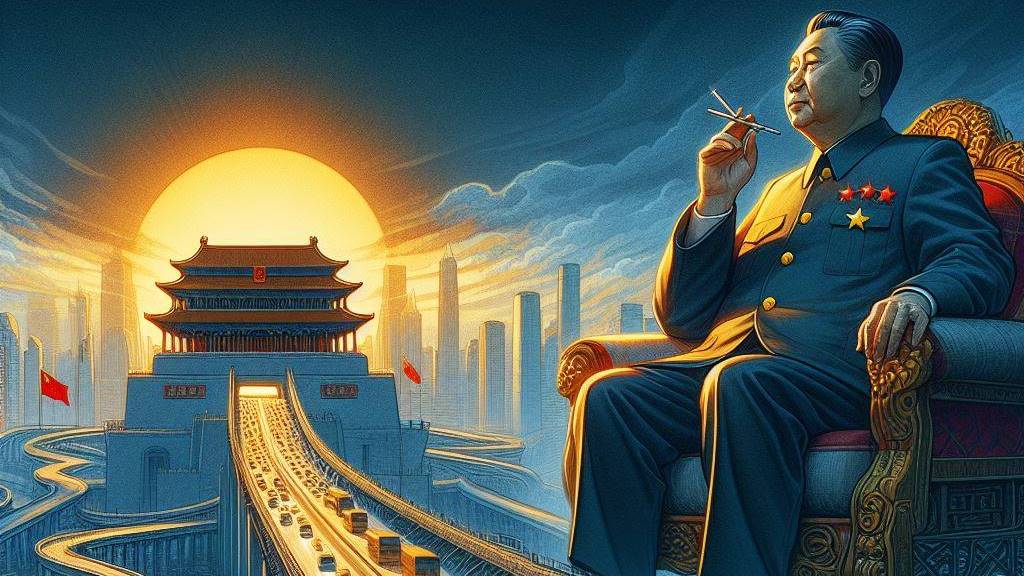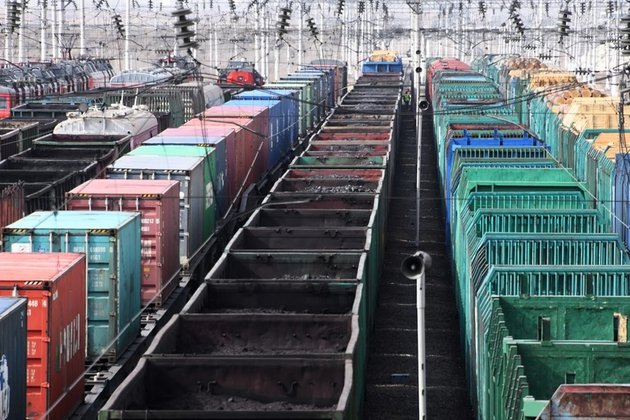Trade
Defying the ‘end of China miracle’ myth

China’s ‘China miracle’ has ended due to a real estate crisis, weak consumption, and export demand. However, recent data suggests recovery is gaining momentum with GDP and production growth. Despite concerns, the real estate sector’s impact on the financial system is expected to be contained. China is looking to stabilize the real estate sector with supply and demand side policies, and focus on alternative growth engines such as industrial innovation and boosting household consumption.
China’s Recovery and Economic Outlook
China’s earlier economic model of credit-driven growth is facing challenges due to a real estate crisis, weak consumption, and export demand. However, recent data indicates a recovery is gaining momentum, with real GDP growth reaching 5.2% in the first three quarters of 2023.
Concerns and Containment of Financial Risks
The real estate crisis has raised concerns, but the risks are expected to be contained. Limited bank financing for real estate developers, government monitoring of real estate prices, and low mortgage default rates are factors contributing to containing financial risks. Despite financial losses for investors, the risks are expected to be manageable.
Future Strategies for Sustainable Growth
To stabilize the real estate sector, selective credit allocation to developers and demand-side incentives for home buyers are being introduced. Furthermore, China needs to focus on investing in research and development, boosting household consumption, and creating conditions for the private sector to create more jobs and raise wages to ensure sustainable growth.
Trade
Self-Reliance and Openness: Core Principles of China’s Third Plenary Session

The Third Plenum communique from the CCP indicates a prioritization of stability and compromise in response to China’s economic challenges. It highlights the concept of Chinese-style modernization and establishes political guidelines for balancing regulation and market forces.
The CCP’s Third Plenum communique signals a focus on stability and compromise in the face of China’s economic challenges. It emphasises Chinese-style modernisation and sets political directions for balancing regulation and market forces. While not as groundbreaking as previous plenums, it acknowledges the importance of market mechanisms and technological self-reliance, aiming to address issues like high youth unemployment and private sector uncertainty. The communique seeks to navigate the complexities of global competition and domestic innovation, potentially reshaping global supply chains and trade dynamics. Overall, it presents a pragmatic blueprint for China’s economic future.
Source : Self-reliance and openness central pillars of China’s Third Plenum | East Asia Forum
Trade
Trade Prevails Over Political Persuasions in China-Germany Relations

China and Germany maintain a strong bilateral relationship, rooted in economic cooperation despite ideological differences. Recent visits and agreements focus on expanding trade and addressing mutual concerns, navigating challenges while nurturing ties.
Evolving Bilateral Ties
China and Germany share a strong bilateral relationship, rooted in history since 1972. This connection has seen moments of cooperation intertwined with periods of tension. German Chancellor Olaf Scholz’s April 2024 visit underscores Germany’s commitment to fostering this partnership, reflecting a mutual interest in maintaining economic ties despite ideological differences.
Economic Pragmatism
As the second and third largest global economies, China and Germany’s economic interdependence is crucial. Germany emerged as China’s primary trading partner in 2023, with trade values reaching €254.4 billion (US$280 billion). In response to global scrutiny, Germany has taken a balanced approach, emphasizing economic stability over political discord. This was evident during Scholz’s prior visit in November 2022, where his diplomatic tone contrasted with broader EU sentiments.
Facing Challenges Together
Despite increasing public skepticism in Germany regarding China’s global influence and human rights issues, both nations continue to seek common ground. Their October 2023 Joint Statement highlights intentions to pursue cooperation in areas like carbon neutrality and open markets. To navigate these complex terrains, Germany can utilize its institutional frameworks to enhance dialogue, while also considering supply chain diversification to reduce dependency on China. The intertwining nature of their economies suggests that, despite challenges, both countries will continue to prioritize their substantial trade relations.
Source : Trade trumps political persuasions in China–Germany relations
Trade
Fixing fragmentation in the settlement of international trade disputes

Fragmentation in global trade due to the lack of development in multilateral trade rules at the WTO has led to an increase in FTAs. The Appellate Body impasse has further exacerbated fragmentation, requiring a multilateral approach for reform.
Fragmentation in Global Trade
Fragmentation in global trade is not new. With the slow development of multilateral trade rules at the World Trade Organization (WTO), governments have turned to free trade agreements (FTAs). As of 2023, almost 600 bilateral and regional trade agreements have been notified to the WTO, leading to growing fragmentation in trade rules, business activities, and international relations. But until recently, trade dispute settlements have predominantly remained within the WTO.
Challenges with WTO Dispute Settlement
The demise of the Appellate Body increased fragmentation in both the interpretation and enforcement of trade law. A small number of WTO Members created the Multi-Party Interim Appeal Arbitration Arrangement (MPIA) as a temporary solution, but in its current form, it cannot properly address fragmentation. Since its creation in 2020, the MPIA has only attracted 26 parties, and its rulings have not been consistent with previous decisions made by the Appellate Body, rendering WTO case law increasingly fragmented.
The Path Forward for Global Trade
Maintaining the integrity and predictability of the global trading system while reducing fragmentation requires restoring the WTO’s authority. At the 12th WTO Ministerial Conference in 2022, governments agreed to re-establish a functional dispute settlement system by 2024. Reaching a consensus will be difficult, and negotiations will take time. A critical mass-based, open plurilateral approach provides a viable alternative way to reform the appellate mechanism, as WTO Members are committed to reforming the dispute settlement system.
Source : Fixing fragmentation in the settlement of international trade disputes






